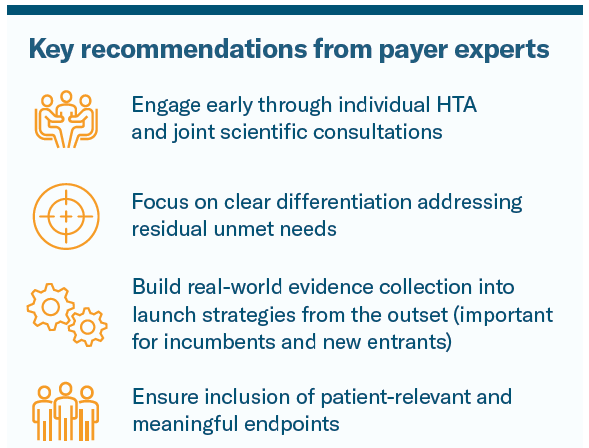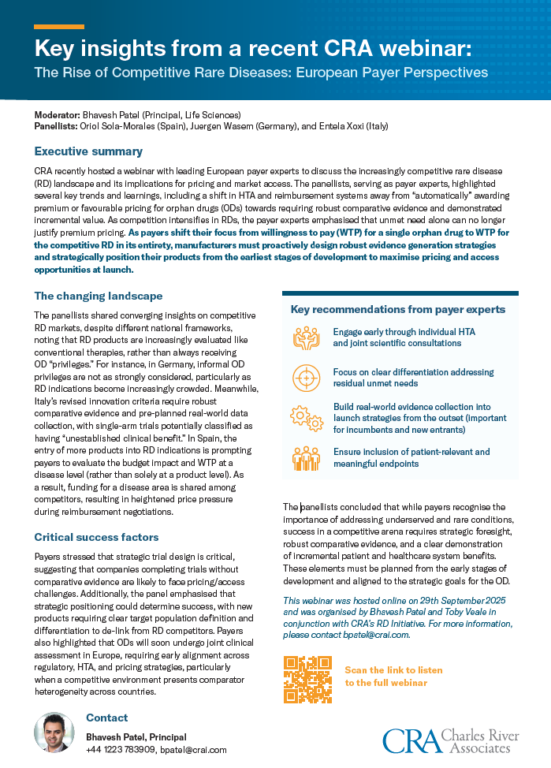CRA recently hosted a webinar with leading European payer experts to discuss the increasingly competitive rare disease (RD) landscape and its implications for pricing and market access.
The panellists, serving as payer experts, highlighted several key trends and learnings, including a shift in HTA and reimbursement systems away from “automatically” awarding premium or favourable pricing for orphan drugs (ODs) towards requiring robust comparative evidence and demonstrated incremental value. As competition intensifies in RDs, the payer experts emphasised that unmet need alone can no longer justify premium pricing. As payers shift their focus from willingness to pay (WTP) for a single orphan drug to WTP for the competitive RD in its entirety, manufacturers must proactively design robust evidence generation strategies and strategically position their products from the earliest stages of development to maximise pricing and access opportunities at launch.
The changing landscape
The panellists shared converging insights on competitive RD markets, despite different national frameworks, noting that RD products are increasingly evaluated like conventional therapies, rather than always receiving OD “privileges.” For instance, in Germany, informal OD privileges are not as strongly considered, particularly as RD indications become increasingly crowded. Meanwhile, Italy’s revised innovation criteria require robust comparative evidence and pre-planned real-world data collection, with single-arm trials potentially classified as having “unestablished clinical benefit.” In Spain, the entry of more products into RD indications is prompting payers to evaluate the budget impact and WTP at a disease level (rather than solely at a product level). As a result, funding for a disease area is shared among competitors, resulting in heightened price pressure during reimbursement negotiations.
Critical success factors
Payers stressed that strategic trial design is critical, suggesting that companies completing trials without comparative evidence are likely to face pricing/access challenges. Additionally, the panel emphasised that strategic positioning could determine success, with new products requiring clear target population definition and differentiation to de-link from RD competitors. Payers also highlighted that ODs will soon undergo joint clinical assessment in Europe, requiring early alignment across regulatory, HTA, and pricing strategies, particularly when a competitive environment presents comparator heterogeneity across countries.
The panellists concluded that while payers recognise the importance of addressing underserved and rare conditions, success in a competitive arena requires strategic foresight, robust comparative evidence, and a clear demonstration of incremental patient and healthcare system benefits. These elements must be planned from the early stages of development and aligned to the strategic goals for the OD.





